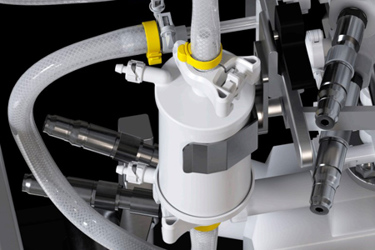Examine The Research Results - Sartobind® Rapid A For mAB Capture

Resins, in particular resins with protein A ligands, have been the workhorse for mAb capture for the past several decades, because they result in >95% purity. Protein A media effectively reduces most of the host cell proteins and DNA from upstream. Due to the high purity which can be achieved after one single purification step, protein A based chromatography media will stay the tool of choice for monoclonal antibody purification for the foreseeable future.
Resins are small porous beads which have small channels with diameters of 50–200 nm leading to a diffusive mass transport. Diffusion is a slow process and requires time which leads to low productivity. Productivity is a parameter to measure how much product is processed per liter of chromatographic media in a certain time and, therefore, gives an indication of how productive a unit operation is. Typical resins have productivity in the range of 10–20 g/L×h, which is relatively low and typically requires large processing times downstream when implemented at manufacturing scale.
Current approaches to overcome this productivity bottleneck include designing processes with higher resin volume to be able to process the required product in shorter time or opting for multicolumn chromatography which can increase the productivity by 3 to 5-fold.
Learn how Rapid Cycling Chromatography (RCC) in combination with novel membrane technology improves process economics, mitigates risk, and increases productivity.
Get unlimited access to:
Enter your credentials below to log in. Not yet a member of Bioprocess Online? Subscribe today.
